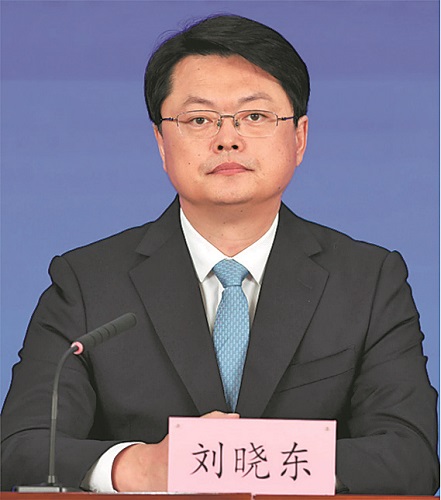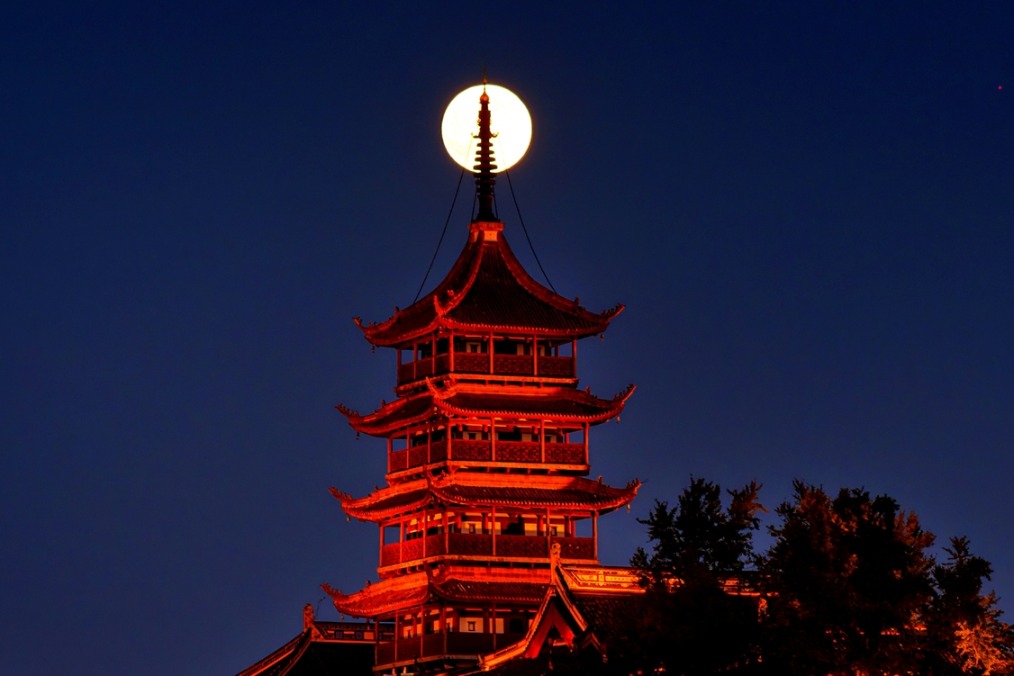Changping builds core of science power
Relocation of top labs strengthens Beijing's northern innovation corridor


Several key national-level laboratories from prestigious institutions, including Tsinghua University, Peking University and other research institutes, will relocate to Beijing's Changping district, bolstering the capital's ambition to become a global hub for science and technology.
The move represents solid efforts to implement the city's development strategy and the country's innovation goals, said Liu Xiaodong, deputy Party chief and head of the district.
"Changping is expected to become a new high-tech engine in China and the world," Liu said.
Adjacent to Haidian district, the city's high-tech center, Changping already hosts one-third of Beijing's key national-level key laboratories and has the largest concentration of universities and working-age talent in the capital. Beijing has 92 universities and colleges, and Changping hosts 41 of their branches or major campuses.
The district has mapped out blueprints for the towns of Nankou and Machikou, drawing inspiration from renowned university towns such as Stanford in the United States, and the city of Cambridge in the United Kingdom, Liu said.
"We aim to build the two towns into 'scientist towns'," he said.
In Nankou, Tsinghua University and the district have collaborated on developing a major national research base. The first phase has opened, with two laboratories currently operating. An interdisciplinary innovation institute has launched 11 technology transfer projects, including several state-of-the-art aerospace initiatives.
The second phase is expected to be completed by the end of the year, creating the largest and most concentrated cluster of national key laboratories outside Tsinghua's main campus.
In Machikou, Changping is working with Peking University's "New Campus + New Engineering" initiative to build another laboratory cluster, Liu said. The first nine facilities are expected to be completed by year's end.
Peking University recently signed an agreement with Changping district to boost innovation, industry and the local living environment.
Machikou, covering about 14 square kilometers, draws inspiration from internationally renowned innovation corridors in the US, including Route 128 in Boston, Massachusetts, and Highway 101 in California.
The International Association of Science Parks and Areas of Innovation, a global network headquartered in Spain, held its annual meeting in Changping in September.
The organization's CEO, Ebba Lund, said Changping represents "a deeper understanding of the significant technological transformations emerging in Beijing".
She said she believes the district will serve as a catalyst for international exchanges and foster the prosperity and development of science parks globally.
Liu Bo, founder of MicroCyto, a high-tech company in Changping that made a breakthrough in resolving the challenge of separating allulose and glucose, said: "Changping has an innovation network comprising expert teams — academicians from Peking University and a number of startup firms. This natural intellectual magnet not only makes top industry experts readily accessible, but also enables efficient collaboration. Issues can be discussed at any time."
According to Global Market Insights, a research organization, the global allulose market reached $147.7 million in 2024 and is projected to grow by more than 14 percent over the coming decade.
In addition, Changping has emphasized urban renewal and the upgrading of traditional industrial sites.
Currently, the Tsinghua projects have repurposed more than 100,000 square meters of existing factory buildings, reducing carbon emissions by about 74,000 metric tons compared with demolishing and rebuilding the sites. The achievement not only meets green and low-carbon goals, but also preserves the industrial heritage of the area, Liu said.
The area has been recognized as one of Beijing's first demonstration parks for industrial upgrading and industrial heritage preservation.
Meanwhile, in Machikou, which neighbors Nankou, the old factory buildings of Hongye Steel are being repurposed to develop the western section of an international medical device city that will host a cluster of national key laboratories.
Once completed, the two areas in Nankou and Machikou will form a world-class "innovation engine" through urban renewal in Changping, serving as a crucial pillar for driving regional innovation and development under the district's plan.
- Changping builds core of science power
- Explainer: How China's leadership sees domestic, global landscapes for country's development over next 5 years
- Xi'an City Wall gets health checkup after heavy rains
- Forum lauds enhanced China-Central Asia ties
- Research reveals parallels in antidepressant therapies
- Experts urge disease prevention awareness to boost HPV vaccination



































